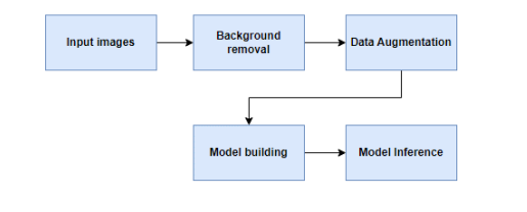CNN Based Study of Improvised Food Image Classification
Objective
This project aims to contribute to the field of computer vision and food image classification, specifically focusing on the challenging task of categorizing improvised or homemade dishes using deep learning techniques. The results of this study can have practical applications in recipe recommendation, dietary analysis, and culinary innovation.
Abstract
Food recognition has captured numerous research attention for health-related applications. Food recognition is a challenging task due to the diversity of food. Convolutional Neural Networks have addressed the complex feature extraction problem and it has improved the classification accuracy compared to traditional image processing techniques. There are different ways to build the food classification model (i.e.) building CNN from scratch, transfer learning, one shot learning, iterative learning and so on. Transfer learning helps in a better way in generic feature extraction and improves classification accuracy. Along with transfer learning, data augmentation techniques have improved the overall classification summary. In this paper, an automated augmentation technique to remove background objects in food images along with an additional augmentation technique is tried. This has improved the classification accuracy and also partial dataset has been used and compared the classification accuracy for different data set sizes. When the background objects in the food images are removed, CNN trains faster and also provide better performance.
Keywords—Food classification, Deep Learning, CNN, Transfer learning, Background removal
NOTE: Without the concern of our team, please don't submit to the college. This Abstract varies based on student requirements.
Block Diagram

Specifications
Software: Matlab 2020a or above
Hardware:
Operating Systems:
- Windows 10
- Windows 7 Service Pack 1
- Windows Server 2019
- Windows Server 2016
Processors:
Minimum: Any Intel or AMD x86-64 processor
Recommended: Any Intel or AMD x86-64 processor with four logical cores and AVX2 instruction set support
Disk:
Minimum: 2.9 GB of HDD space for MATLAB only, 5-8 GB for a typical installation
Recommended: An SSD is recommended A full installation of all MathWorks products may take up to 29 GB of disk space
RAM:
Minimum: 4 GB
Recommended: 8 GB
Learning Outcomes
· Introduction to Matlab
· What is EISPACK & LINPACK
· How to start with MATLAB
· About Matlab language
· Matlab coding skills
· About tools & libraries
· Application Program Interface in Matlab
· About Matlab desktop
· How to use Matlab editor to create M-Files
· Features of Matlab
· Basics on Matlab
· What is an Image/pixel?
· About image formats
· Introduction to Image Processing
· How digital image is formed
· Importing the image via image acquisition tools
· Analyzing and manipulation of image.
· Phases of image processing:
o Acquisition
o Image enhancement
o Image restoration
o Color image processing
o Image compression
o Morphological processing
o Segmentation etc.,
· How to extend our work to another real time applications
· Project development Skills
o Problem analyzing skills
o Problem solving skills
o Creativity and imaginary skills
o Programming skills
o Deployment
o Testing skills
o Debugging skills
o Project presentation skills
o Thesis writing skills





 Paper Publishing
Paper Publishing
